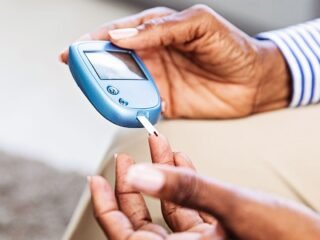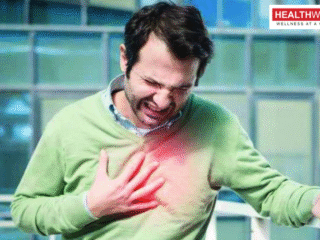Heart disease continues to be one of the leading causes of death globally, and India is no exception. Cardiologists warn that plaque buildup in arteries — known as atherosclerosis — is silently fueling heart attacks and strokes, even among younger adults.
But what exactly causes these plaques to form inside our blood vessels? Can the damage be reversed once it begins?
In this detailed health report, experts explain the science behind artery plaque formation, risk factors, and practical ways to reverse or slow its progression.
Understanding Arterial Plaque: The Hidden Culprit Behind Heart Disease
Arteries are the body’s life-supporting highways — delivering oxygen-rich blood from the heart to every organ. Over time, however, these vessels can become narrowed or blocked due to the buildup of fatty substances known as plaques.
These plaques are composed of cholesterol, fats, calcium, and cellular waste products, all trapped beneath the artery’s inner lining (endothelium).
The process doesn’t happen overnight — it develops silently over years, often without symptoms until a serious event like a heart attack or stroke occurs.
Doctors describe it as “rusting from the inside.” Just as rust narrows a pipe, plaque narrows arteries, restricting blood flow and forcing the heart to work harder.
Why Plaques Form: The Real Causes Behind Atherosclerosis
Experts explain that arterial plaque formation is a multi-step process, influenced by lifestyle, genetics, and environmental factors.
Here’s how it happens:
- Endothelial Damage:
The process begins when the inner lining of arteries (the endothelium) becomes damaged — usually due to high blood pressure, smoking, or excess sugar. This damage makes the artery walls sticky and more likely to trap cholesterol particles. - LDL Cholesterol Buildup:
When levels of low-density lipoprotein (LDL), also called “bad cholesterol,” rise, these particles infiltrate the damaged areas and oxidize, triggering inflammation. - Inflammation and Immune Response:
The body sends white blood cells to “clean up” the oxidized LDL. But instead of fixing the problem, these cells turn into foam cells that get trapped in the artery wall, creating fatty streaks. - Plaque Formation:
Over time, calcium and other substances accumulate, forming hard plaques that stiffen and narrow the arteries — a condition known as atherosclerosis. - Plaque Rupture and Clotting:
The most dangerous phase occurs when a plaque ruptures. This exposes the inner core to blood, triggering a clot (thrombus) that can completely block the artery, causing a heart attack or stroke.
Risk Factors: Who Is Most at Risk?
Certain people are genetically predisposed to plaque buildup, but lifestyle plays a major role in accelerating the process.
According to cardiologists, the main risk factors include:
- High LDL cholesterol and triglycerides
- Hypertension (high blood pressure)
- Diabetes and insulin resistance
- Obesity and sedentary lifestyle
- Smoking and alcohol consumption
- Stress and poor sleep
- Unhealthy diet rich in processed food, red meat, and trans fats
Even individuals who appear fit can have “silent atherosclerosis”, where arterial plaque develops without noticeable symptoms until it’s too late.
Symptoms You Should Never Ignore
While early stages of arterial plaque often go unnoticed, the following symptoms may indicate compromised blood flow:
- Chest pain or tightness (angina)
- Shortness of breath during exertion
- Unexplained fatigue or dizziness
- Pain in arms, neck, jaw, or upper back
- Numbness or coldness in limbs (due to peripheral artery disease)
Doctors emphasize that these symptoms should prompt immediate medical evaluation — as they could be early warning signs of coronary artery blockage.
Can Plaque Be Reversed? The Good News
The most encouraging finding from modern cardiology is that arterial damage can be slowed, stabilized, and even reversed — especially when detected early.
While completely removing hardened plaque isn’t always possible, its growth can be halted, and soft plaque can be reduced with lifestyle changes, medications, and medical therapies.
Experts divide reversal strategies into three levels:
1. Lifestyle & Diet-Based Reversal
Lifestyle changes remain the most powerful weapon against plaque buildup.
a. Heart-Healthy Diet:
Switching to a diet rich in whole grains, fruits, vegetables, nuts, olive oil, and lean proteins can dramatically reduce LDL cholesterol and inflammation.
The Mediterranean diet and DASH (Dietary Approaches to Stop Hypertension) are proven to reduce arterial plaque progression.
b. Avoid Trans Fats and Added Sugars:
Processed foods, bakery items, and fried snacks raise LDL and lower HDL (“good” cholesterol). Similarly, sugary drinks trigger insulin spikes that worsen inflammation and plaque growth.
c. Exercise Regularly:
At least 150 minutes of moderate aerobic activity per week — brisk walking, swimming, or cycling — helps increase HDL cholesterol, improve circulation, and keep arteries flexible.
d. Quit Smoking:
Smoking is a major cause of endothelial damage. Quitting can immediately improve blood vessel function and reduce the risk of clot formation.
e. Manage Stress:
Chronic stress elevates cortisol, which raises blood pressure and triglycerides. Techniques like yoga, deep breathing, and mindfulness meditation can lower cardiovascular risk.
2. Medical and Pharmacological Intervention
When lifestyle changes alone aren’t enough, doctors prescribe medications to control lipid levels and prevent further plaque buildup.
a. Statins:
These drugs lower LDL cholesterol and stabilize existing plaques, reducing the risk of rupture. They also have mild anti-inflammatory effects.
b. PCSK9 Inhibitors:
Newer injectable drugs that dramatically lower LDL cholesterol, especially useful for those with genetic hypercholesterolemia.
c. Antiplatelet Agents:
Aspirin and similar drugs help prevent clot formation on top of existing plaques.
d. Blood Pressure and Diabetes Control:
Managing these underlying conditions reduces strain on arteries and slows plaque development.
3. Advanced Treatments and Surgeries
In severe cases, when arteries are critically narrowed, medical procedures may be required:
- Angioplasty and Stenting:
A catheter is inserted to widen blocked arteries, and a stent is placed to keep them open. - Bypass Surgery:
Surgeons reroute blood around severely clogged arteries using healthy blood vessels from other parts of the body.
While these treatments restore blood flow, they don’t “cure” atherosclerosis — so lifestyle and medication management must continue.





